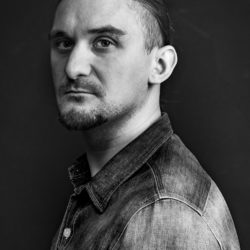Szymon Barylski
Interview with Szymon Barylski
Discovery of the Year 2016 Editorial for Fleeing Death
What urged you to become a photographer covering human rights violations?
It came by itself. During my travels, I often visited very poor places. I watched the lives of people in very difficult conditions where basic human rights are violated. It was not enough for me. I wanted to know the stories of these people, learn about them and from them as much as possible. During these trips, I paid attention to how many people are indifferent to the fate of others. I was looking for a way to show these problems and help these people. Then I realized that photography is a powerful tool that can create awareness and effect change. I’m using this tool to document, educate, and inform. I wish my photos could increase individual and collective awareness about the social, political and economic need, and urge people to act, be part of positive changes.
Did you ever feel the need to keep in touch with your subjects?
I always have a need and as far as possible I try to maintain contact. It’s good to know how the fate of those people went, and it’s especially nice when it’s good news.
How do you earn your subjects’ trust to be photographed? When do you feel it’s already unethical?
The relationship with the people that I photograph is the most important. You have to get know them and approach them with respect. When we take care of this relationship in a proper way, they are capable of opening up in front of us, and with their sincerity and trust, we will have a better story.
For example: When I got to the refugee camp in Idomeni, I did not start photographing right away. I wanted to talk with people and get to know them, spend some time with them. Not everyone spoke English, but I think that if you want to understand someone, the language barrier does not bother you. We tried to find a common language. If someone sees sincere intentions, there is no problem with photographing.
What is the story behind your winning TeIFA entry?
When I was watching the news and hearing about the refugee crisis, I felt that it could affect all of us! I was not completely convinced of what I see and hear in the media. I was terrified by the news which human drama brings to numbers and statistics, calling most of them terrorists. I have been talking a lot about this problem for some time. I can say that it was the main topic in my home. One evening my girlfriend asked, “Why don’t you fly there?” And the next day I was already there.
Can you share with us your overall experience in documentary photography?
The more honest and personal, the better. The idea is to go deeply into oneself, think about the issues that one really wants to talk about. Being a photographer involves trying to adapt to whatever we get and being able to learn from these experiences as much as we can.
Take us back to the time you discovered your passion for photography.
I figured it would be nice to have a camera to document the place where I live and my travels. So I can say that I began with street and travel photography.
After some time, I noticed that photography is not just about a nice and correctly-made photograph. I understood that this tool allows me to tell someone’s life and above all, to discover and get to know myself. I was always the most interested in listening to the stories of people. Then I understood that in photography the most important thing for me is the human being and his emotions and story. When I perceived that through photography, I could help others and contribute to changes. I knew I want to and I have to do it. For this reason, I am engrossed in documentary photography and photo essays.
When you press the shutter, what are you aiming to capture?
In general, the point is to look, learn to predict. Thinking one step ahead, I’m able to deduce how the subject of my photo will behave.
I try to tell his story and show it directly, authentically and honestly. I am looking for the truth, important moments in the life of the subject. I am looking for a frame that is not replicated.
What are your photography techniques that you are willing to share?
The most important thing is to know your camera and knows how to use it. Equally important is the knowledge of shooting techniques, because it can be useful regardless of what style of photography we do. I think that first off, what is important is to be focused on the story you’re trying to tell.
The best pictures in history are often not the most technically skilled, but they are full of emotions and they have something that moves us.
What processes do you undergo when you create your photos?
I am always fully involved in every project, so I treat each one very seriously. I try to find a connection between myself and the subjects I have focused on. I need to feel and choose a theme; I need to experience it and know as much as I can about it. I prepare myself for each project individually, accurately, going into detail, and as a result I can create something real.
What is your dream project? Why?
There are a lot of ideas for new projects in my head and every project I do is just as important to me, which makes it a dream project.

